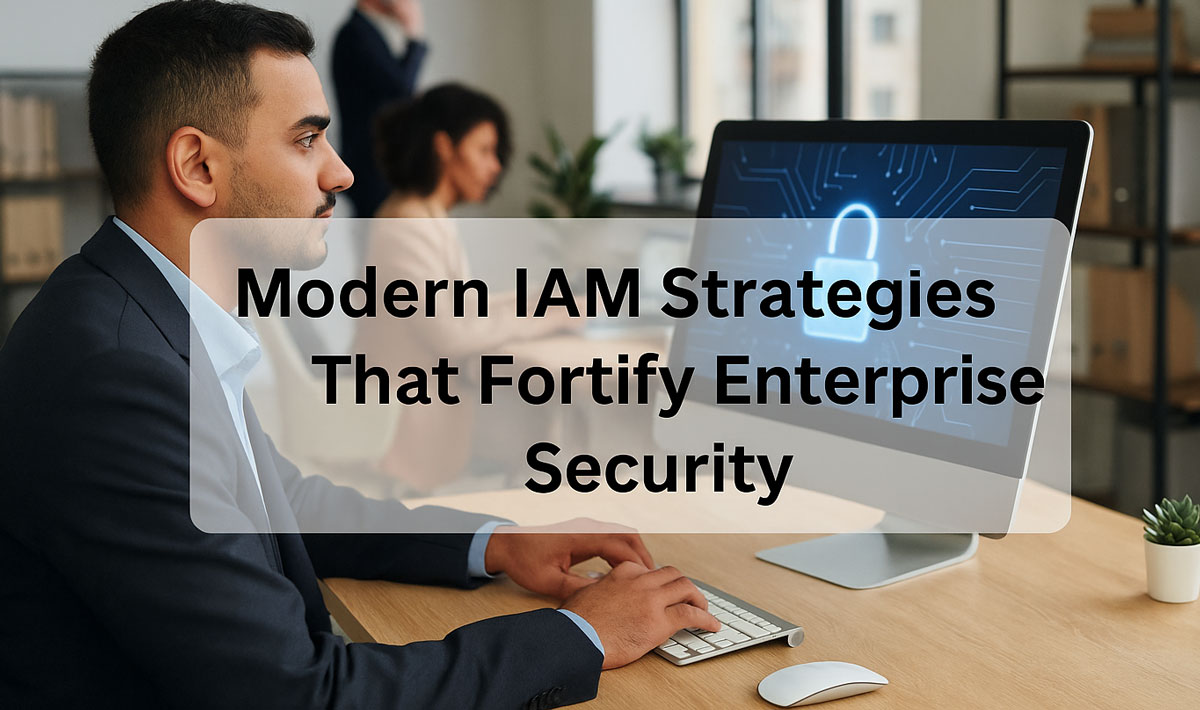No products in the cart.
 Identity Is the New Perimeter
Identity Is the New Perimeter
Cloud adoption is rising and hybrid work is standard. Digital identity is now the most targeted attack surface. Firewalls no longer define the boundary. Access control defines it. IAM is a critical pillar in safeguarding enterprise environments.
Why IAM Is Crucial in Today’s Threat Landscape
IAM governs who accesses what, when, and how. Every login, database query, or app interaction becomes a potential entry point for bad actors. Weak IAM exposes enterprises to credential theft, insider threats, and compliance breaches. Strong IAM ensures visibility, control, and accountability across the board.
Traditional IAM Isn’t Enough
Legacy IAM frameworks supported fixed roles within centralized, on-site infrastructures. Modern environments are cloud-based, dynamic, and decentralized. Legacy tools lack scalability, real-time decision-making, and multi-device access. These limitations create audit and security blind spots.
Core Functions of Modern IAM
- Identity verification: Modern IAM verifies identity using multi-factor authentication (MFA) and biometrics, not just usernames and passwords.
- Access rights: IAM assigns permissions based on roles, departments, or user behavior.
- Lifecycle management: IAM oversees access at every stage, ensuring accurate privilege adjustments as responsibilities shift.
- Data integrity: IAM blocks unauthorized changes before they occur.
Adaptive IAM: Smarter and Context-Aware
Adaptive IAM evaluates real-time context—device health, geolocation, access time, and behavior history. It determines whether unusual login activity, such as late-night access, matches expected behavior or indicates potential compromise.
Zero Trust and IAM: A Unified Front
Zero Trust assumes breach by default. Every request requires verification. IAM enforces this by checking identity, validating endpoints, and granting role-appropriate access—even within the network.
Least Privilege: Minimize Risk by Design
Access is limited to what users need to perform their responsibilities. IAM enforces just-in-time (JIT) and time-bound privileges, reducing the blast radius of compromised accounts and strengthening compliance.
Single Sign-On (SSO) and Federated Identity
SSO enables access across platforms with a single login, reducing password fatigue. Federated identity systems provide secure, seamless access across cloud and on-prem environments using protocols like SAML and OAuth 2.0.
Best Practices for SSO Security
- Enforce MFA on initial login
- Set session timeouts
- Centralize identity through a trusted provider
This This balances ease of use with strong security controls.
Multi-Factor Authentication (MFA): A Must-Have
MFA blocks over 99% of credential-based attacks. Options include:
- Authenticator apps
- Biometric verification
- Hardware tokens
Avoid SMS-based MFA due to risks like SIM swapping.
Identity Governance and Access Controls
Governance ensures all access requests are necessary, appropriate, and authorized. IAM uses RBAC and ABAC to enable scalable, rule-based access controls, simplifying compliance audits.
Automating Lifecycle and Policy Enforcement
Automated IAM platforms adjust permissions as roles change, revoking unnecessary access without delay. This streamlines operations and meets audit requirements.
IAM for the Hybrid Workforce
IAM enforces uniform security policies for both in-office and remote users. Conditional access and device-aware controls ensure secure connections across all locations and device types.
Privileged Access Management (PAM)
PAM secures high-level accounts using session recording, credential vaulting, and temporary access approvals. It provides traceability and reduces insider risk.
Integrating IAM with Threat Detection
IAM logs detect threats. Integrated with SIEM or SOAR tools, they deliver real-time insights into suspicious behavior such as privilege escalation or login anomalies and trigger automated defenses.
Cloud IAM: Managing Identity Across Platforms
Each cloud vendor—AWS, Azure, GCP—uses a distinct IAM model. Enterprises require centralized tools to unify identity governance and prevent misconfigurations and access sprawl.
IDaaS and AI-Powered IAM
Identity-as-a-Service (IDaaS) platforms deliver cloud-native IAM capabilities for agile, scalable security. AI enhances IAM by learning user behavior, predicting threats, and adapting policies without manual input.
Conclusion: Smarter Identity, Stronger Security
Modern IAM isn’t just about logging in—it’s about controlling access intelligently, minimizing risk, and preparing for the future. By combining Zero Trust, adaptive access, MFA, and cloud-native tools, enterprises can make identity their strongest defense line—not their weakest link.
Stay updated! Follow us on social media! Facebook, Twitter, LinkedIn
Check out our newest blog entry (Essential Endpoint Protection ToolsEssential Endpoint Protection Tools)
Subscribe to get free blog content to your Inbox



 Identity Is the New Perimeter
Identity Is the New Perimeter